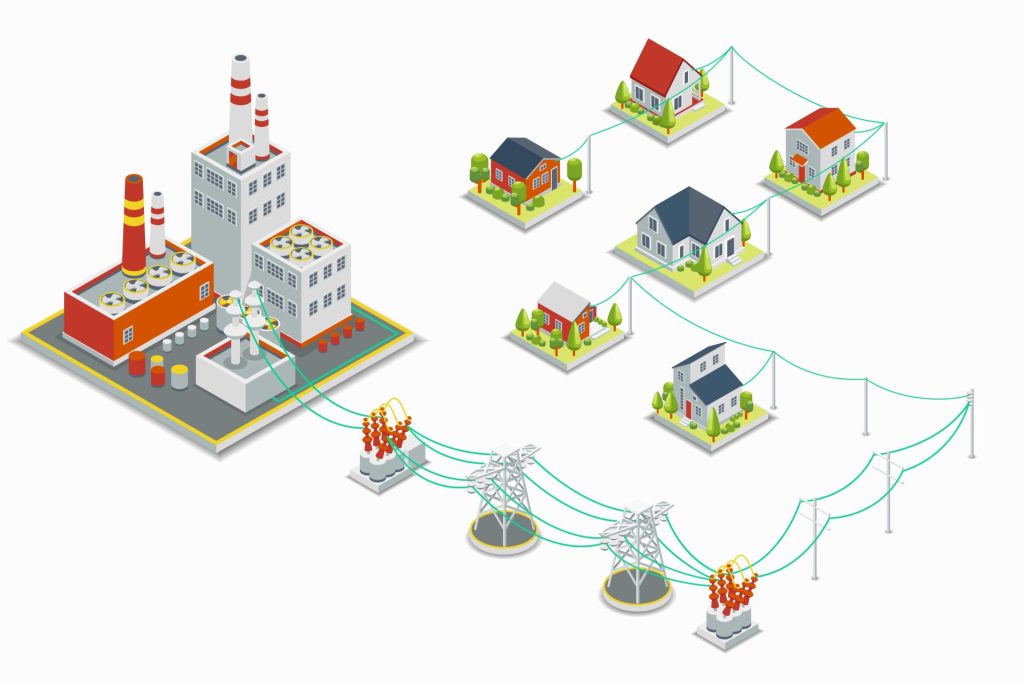
It seems that daily there is a new report about the US Electrical Grid; from President Biden making a claim about renewable energies, to sunspot activity, to terrorists shooting up transfer stations, to “acts of God” such as hurricanes or tsunamis. That doesn’t even account for the unseen but potentially even more dangerous scenarios. Such as involving cyber attacks from individuals or other countries. Because of these and many other threats people have begun to wonder “How safe is the US Electrical Grid”?
The US electrical grid is extremely large. It comprises over 6,400 power plants, 55,000 substations, and over 450,000 miles of high-voltage transmission lines1. According to the U.S. Energy Information Administration (EIA), fossil fuel–based power plants—burning coal, oil, or natural gas—create about 60 percent of the nation’s power. Meanwhile, nuclear power accounts for nearly 20 percent. Electricity is sent across long distances using high-voltage transmission lines. Then, local facilities known as substations convert that high-voltage power to a lower voltage (a process called “stepping down”). Finally, it is distributed to nearby homes and businesses2.

Although this makes it very difficult to affect the whole grid at once, it also makes it very difficult to protect. Most power plants are protected by security, but they are also usually very remote. Another protective feature of power plants is that it is very difficult to determine vulnerabilities from outside the plant. Most industry insiders think that the only real credible threat to power plants would have to come from “the inside”. A disgruntled employee or someone accessing the plant through normal means such as a contractor. Because of this, access control is very robust at most power plants. This is my experience over the last 17 years. Names are taken and there must be a reason for someone to want access.
Recently with attacks in Washington, Oregon, and North Carolina, attacks on sub-stations have become more of a concern. Although it is believed that these attacks were carried out by individuals, not terrorist groups, the attacks are concerning. With 55,000 substations spread throughout the US, we have all seen them on the side of the road. Usually near high-voltage lines, the substations have large transformers that step down the voltage so that it can be distributed at a lower voltage across the local network. Usually only protected by a fence around the yard, these substations are vulnerable to attack from individuals. It is not feasible to take down the whole grid this way however, tell that to the people who lose power for days or weeks.
But some skeptics say it’s the opposite. Jon Wellinghoff, who served as chairman of the Federal Energy Regulatory Commission from 2009 to 2013, has sounded the alarm about the danger of an attack on the system3. “If you bring down a limited number of substations in each of those interconnects, you cannot bring the interconnect back up again,” he said. “This isn’t classified information. This is all information that has been in government reports for years and years and years. If you destroy the transformers—all it takes is one high-caliber bullet through a transformer case and it’s gone, you have to replace it,” he said. “If there aren’t spares on hand—and in the case of a coordinated attack on multiple substations, any inventory could be exhausted—it takes months to build new ones.”
Probably even more concerning – let’s face it, attacking 55,000 substations with Seal Team 6 precision is not as feasible as a cyberattack. A simple string of 1’s and 0’s could cause a great deal of physical damage very quickly. Such an attack could easily bypass failsafes in the physical infrastructure that are designed to stop cascading failures that would be needed to take down the grid. Jeff Dagle, an electrical engineer at the Pacific Northwest National Laboratory who served on the Northeast Blackout Investigation Task Force says “Imagine if somebody could get in there and command all the circuit breakers in a utility to open. Is that likely? No. Is that possible? Sure! An operator sitting in a control room could do it. That automation is designed to allow that to do it.”
Acts of God are another concern. These are earthquakes, hurricanes, fires, sunspot activity, or tsunamis such as the one that Japan experienced. Why are these concerning? It is impossible to engineer these kinds of disasters. We try. A power plant I worked at many years ago had an emergency building that had eight-foot thick walls and vault-like doors to protect it from an airliner crashing into it because it was on the flight path of a major airport. But it is usually only in hindsight that engineering catches up.
For instance, the tsunami in Japan was unprecedented. Something like that had not happened in hundreds of years. Same with a category five hurricane (Katrina) hitting New Orleans and overloading the pumps and dykes that protected the city from flooding. Now New Orleans has a much more robust system in place. We changed the way we engineered the system after the fact.
Many say that the US grid is vulnerable to attack and natural disasters and that we should move to a microgrid approach. A microgrid, unlike the system we have now, is divided into much smaller grids. This means that if one microgrid is affected the others around it can be used to bypass the damage and still maintain the grid viability. Is the US electrical grid vulnerable? Yes. It is too large a system not to be. But its size is also a protection. The chance of one event removing power from the whole country is very small.